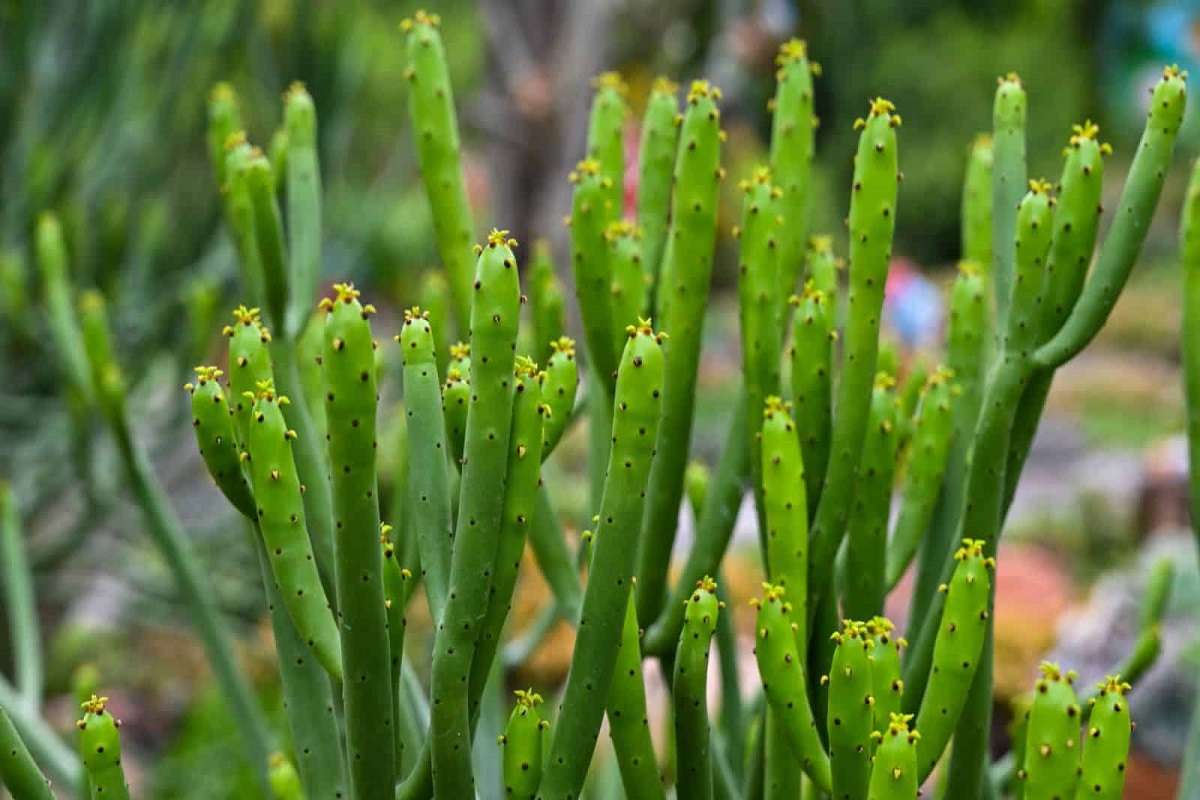While scientific evidence is limited, anecdotal accounts and cultural practices shed light on its potential therapeutic applications.
-
- Skin Conditions: Traditional medicine in some regions involves the topical application of Euphorbia tirucalli latex to address skin conditions such as warts, corns, and calluses. The plant’s latex is believed to have properties that may aid in healing and reducing skin ailments.
- Wound Healing: The latex has been historically used for wound healing. Traditional practices include applying the latex to wounds to promote healing and prevent infections. The potential antimicrobial properties of the latex may contribute to its traditional use in wound care.
- Traditional African Medicine: In certain African traditional medicine systems, Euphorbia tirucalli is employed to treat various ailments, including snake bites. Additionally, it is used as a remedy for gastrointestinal issues, showcasing the plant’s diverse applications in traditional healing.
- Antimicrobial Properties: The plant’s latex contains compounds with potential antimicrobial properties. While more research is needed, traditional uses suggest that extracts from Euphorbia tirucalli may have been historically utilized for their antibacterial and antifungal effects.
- Rheumatism and Joint Pain: Some cultures have turned to Euphorbia tirucalli to alleviate symptoms of rheumatism and joint pain. Whether applied topically or taken internally in specific formulations, the plant has been incorporated into traditional remedies targeting musculoskeletal issues.
- Respiratory Conditions: Traditional uses include the treatment of respiratory conditions like coughs and asthma. While these applications are part of cultural practices, the scientific basis for these respiratory benefits requires further investigation.
Despite its intriguing traditional uses, it’s crucial to approach Euphorbia tirucalli with caution due to its toxic nature, especially in the latex. Direct contact can lead to skin irritation, and ingestion may result in severe symptoms. Any exploration of traditional medicinal use should be done under the guidance of healthcare professionals to ensure safety and efficacy.
In conclusion, Euphorbia tirucalli serves as a fascinating subject of exploration in traditional medicine, offering a glimpse into the diverse ways cultures have incorporated this plant into their healing practices. As research continues, a deeper understanding of its potential benefits and risks may emerge, shaping its role in both traditional and modern medicinal contexts.






























